The Metropolitan Museum of Art’s (Met) Costume Institute’s 2020 exhibition traces 150 years of fashion, through a disruptive timeline, on the occasion of the Met’s 150th anniversary.
In May we had to say goodbye to the Met 2020 Gala, the highly anticipated annual gala at the Metropolitan Museum of Art in New York, because of the pandemic situation. Time, a complex and abstract concept that allows us to reinterpret and decode the history of fashion. That was to be the theme of the 2020 Met Gala.
On the contrary, to the delight of fashion lovers, it is the annual exhibition organized by the museum around the world of design that has not been suspended. This year’s exhibition is titled “About Time: Fashion and Duration.” The exhibition opened last October 29, as part of the celebration of the museum’s 150th anniversary and will remain open until February 7, 2021.
The exhibition traces a century and a half of fashion, from 1870 to the present day, and does so through a disruptive timeline. In fact, 150 years that are also the 150-year history of the museum. In the words of Max Hollein, director of the Met Museum, which captures the designboom magazine:
About Time: Fashion and Duration considers the ephemeral nature of fashion, employing flashbacks and fast-forwards to reveal how it can be both linear and cyclical. The result is a show that presents a nuanced continuum of fashion throughout the museum’s 150-year history.
The exhibition is a journey through time.
Exhibit design is by Es Devlin, the noted set designer. The garments are accompanied by the writings of Virginia Woolf, who has the role of “invisible narrator.” Since, her work Orlando or, rather, the film adaptation that was made of it in 1992, served as an inspiration to devise the exhibition.
In addition, tas explained by the Met, the exhibition is based on French philosopher Henri Bergson’s concept of the duration of time. Understood as something that can be measured through images but is never perceived as a whole.
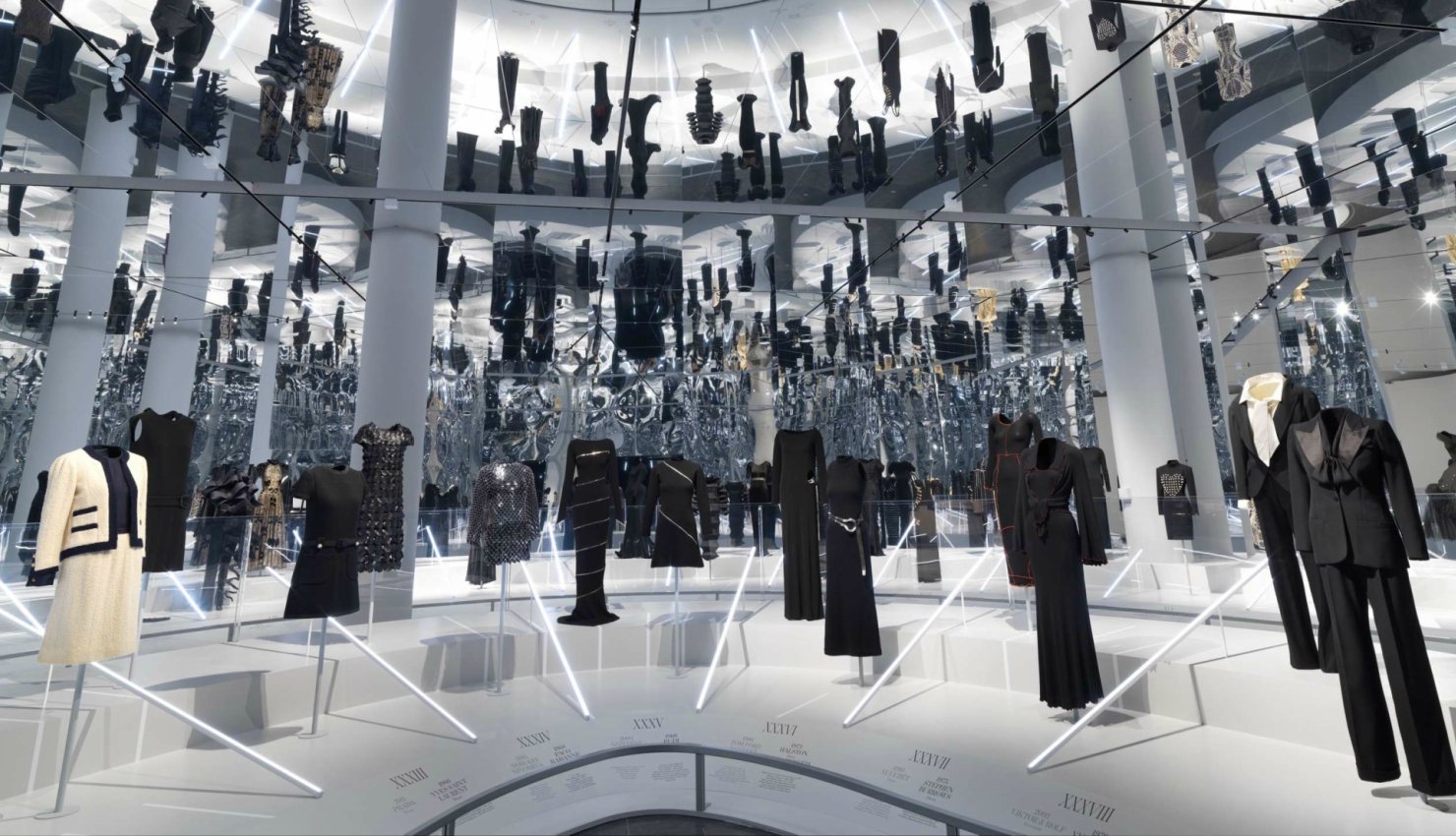
Decorations by Es Devlin. Photos: Met Museum
The exhibition explores the temporal associations generated by clothing. It is divided into two adjacent clock-shaped galleries, decorated with 60 luminous marks to recreate 60 minutes of the clock.Thus, the gallery is divided into 60 segments, each showing two garments: one following time chronologically and one from a different period in order to show similarities or differences.
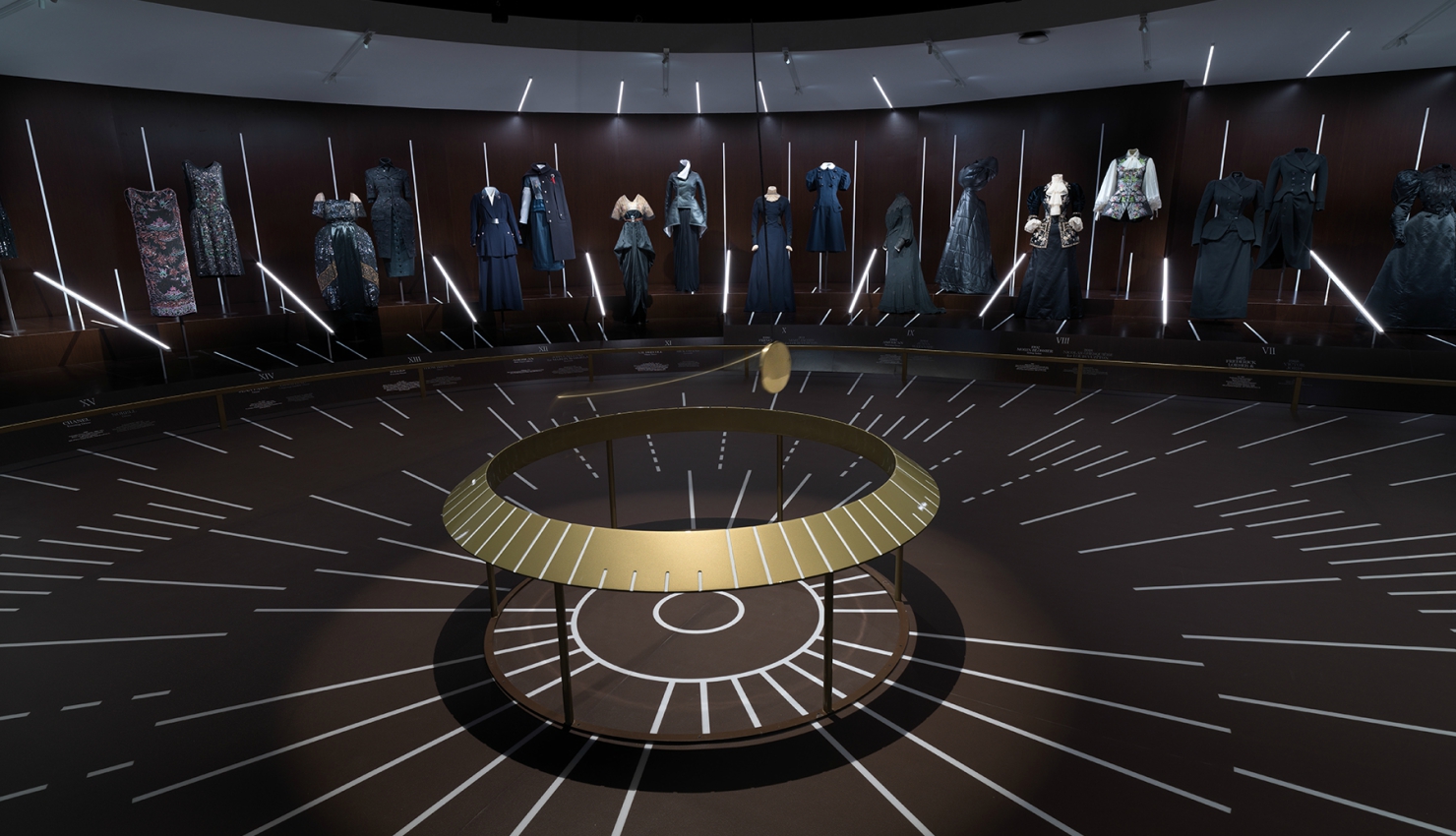
Gallery decorated with 60 luminous marks to recreate 60 minutes of the clock. Photo: Met Museum
The present, past and future of fashion
The garments on display are connected through their shape, material, pattern, technique or decoration, to show the coexistence of the past with the present.
The polison was a fundamental element in the fashion of the late nineteenth century. In addition, it completely modified the female figure by creating more volume in the back. In this style was inspired, a century later, Yohji Yamamoto to create a series of long coats with the back cut to show poufs of tulle. .
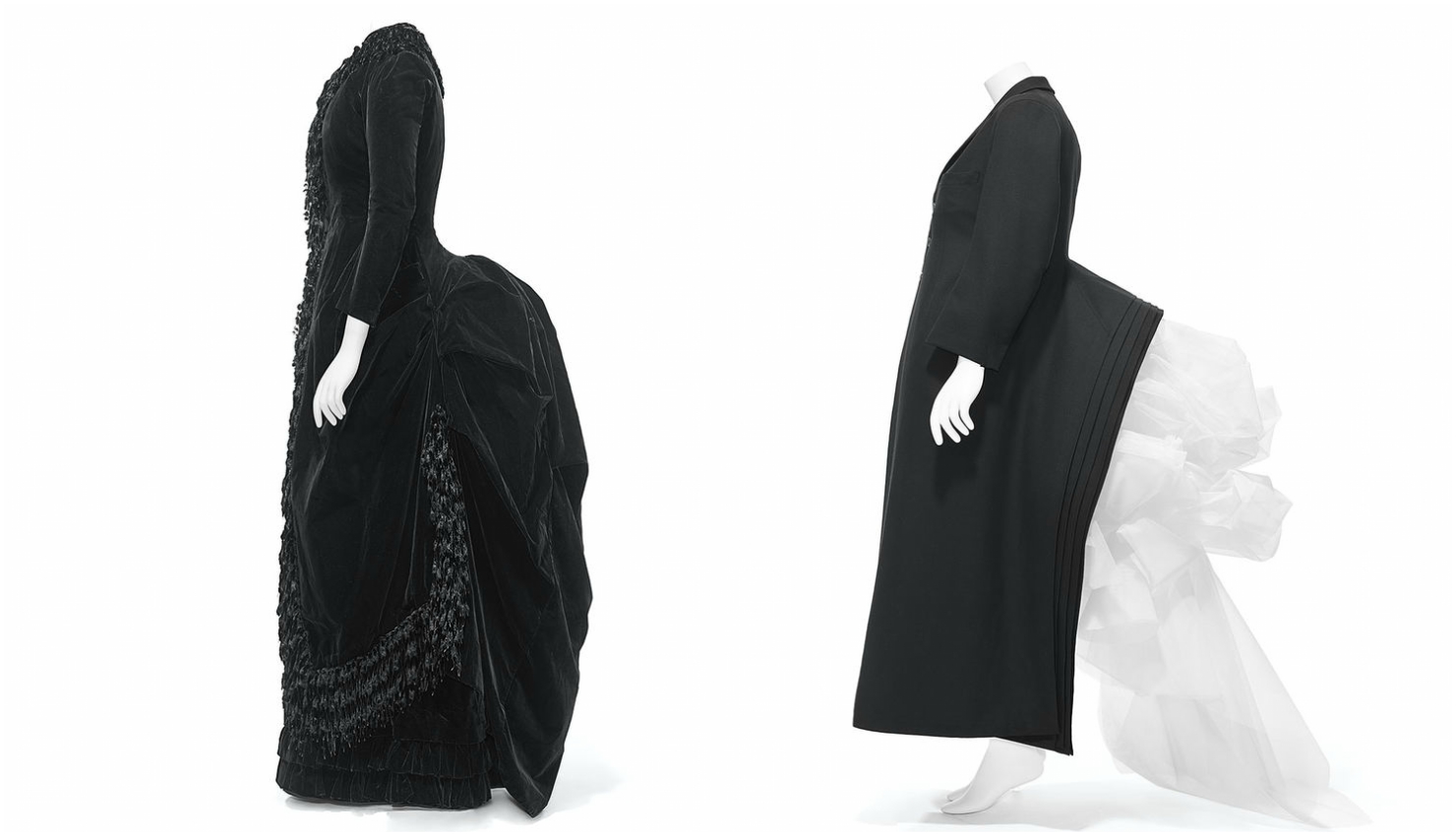
I: American dress 1885. D: Yohji Yamamoto Fall-Winter 1986–87. Images: Met Museum. Nicholas Alan Cope
Another example, a gigot sleeved dress, also known as a “leg of mutton,” from 1895 by American designer Mrs Arnold; is paired with a jacket and skirt from 2004 Comme des Garçons by designer Rei Kawakubo inspired by the 1895 style.

I: Mrs Arnold 1895. D: Comme des Garçons Autumn-Winter 2004/05. Images: Met Museum Nicholas Alan Cope
Next, we come across this velvet riding jacket that was created for Queen Alexandra of England, in 1902. The embroidery imitates the style of French formal costumes of the 18th century. It was from these same suits that designer Nicolas Ghesquière, was inspired to create this silk vest for Louis Vuitton in 2018.
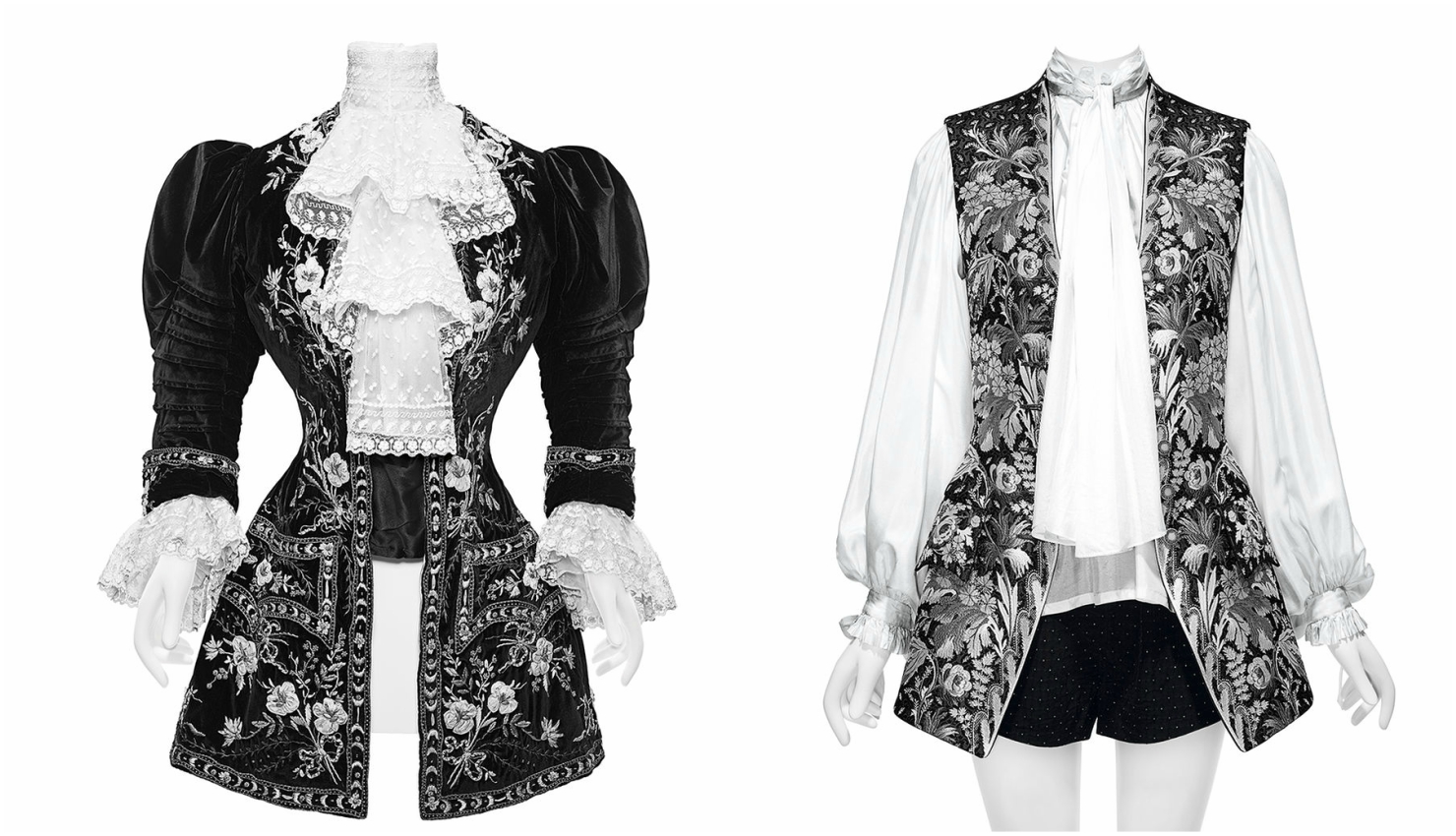
I: Morin Blossier riding jacket 1902. D: Louis Vuitton Spring-Summer 2018. Images: Met Museum. Nicholas Alan Cope
Also, a minidress from 1968, by designer Rudi Gernreich with a silvery zipper that runs from the escort and wraps to the hem; it is paired with a 2003 dress, by French designer Azzedine Alaïa, with an equally suggestive use of the zipper.
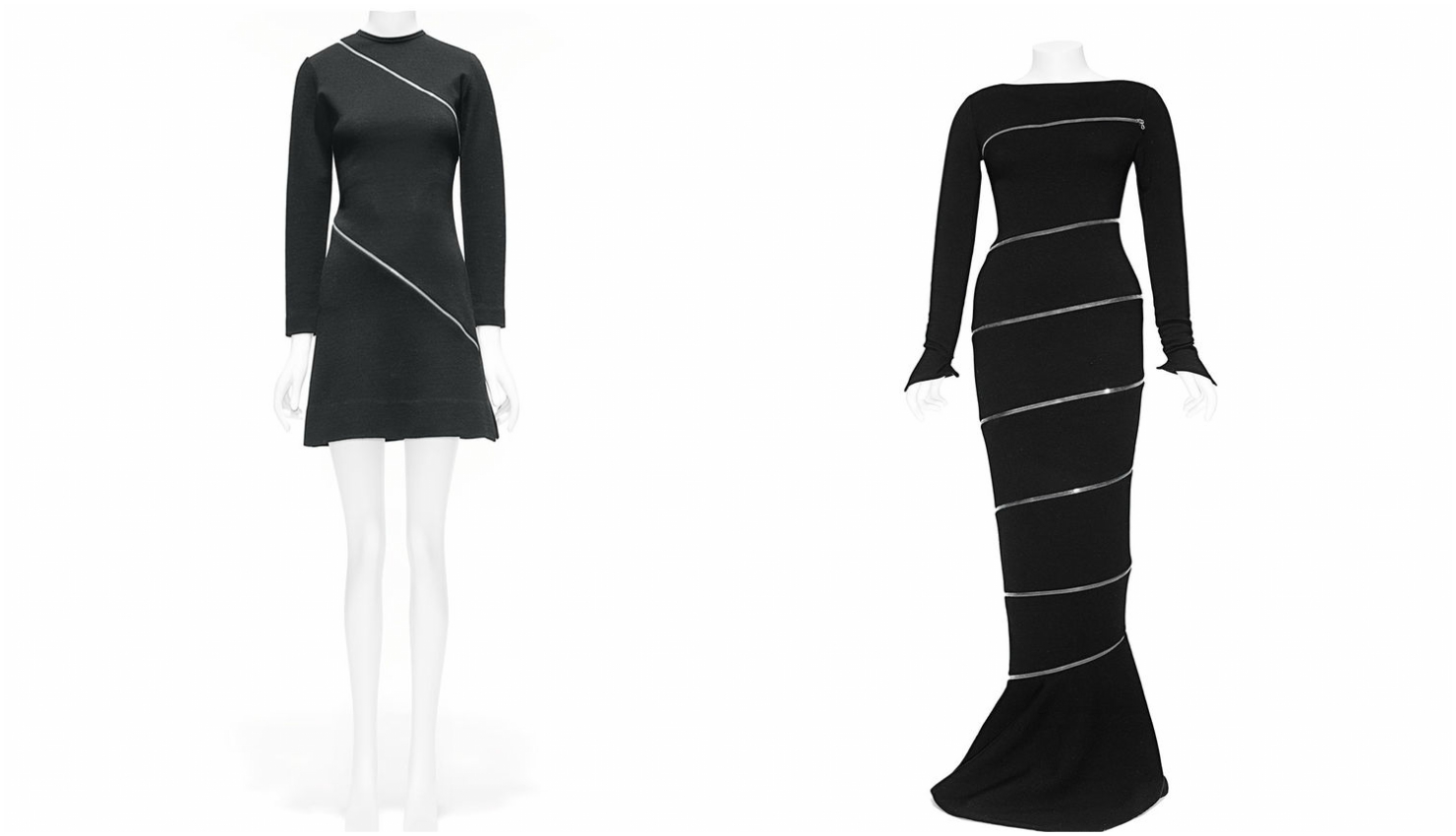
I: Rudi Gernreich Autumn-Winter 1968/69. D: Azzedine Alaïa Spring-Summer 2003. Images: Met Museum Nicholas Alan Cope
The mythical outfit by French designer Gabrielle Chanel, whom we all know artistically as Coco Chanel. It included a textured wool square jacket, with a matching straight skirt and matching blouse. The French designer created different versions of her outfit until her death. When Karl Lagerfeld assumed the reins of the Chanel house, he reinterpreted the original suit in his own way, adapting it to the new times.
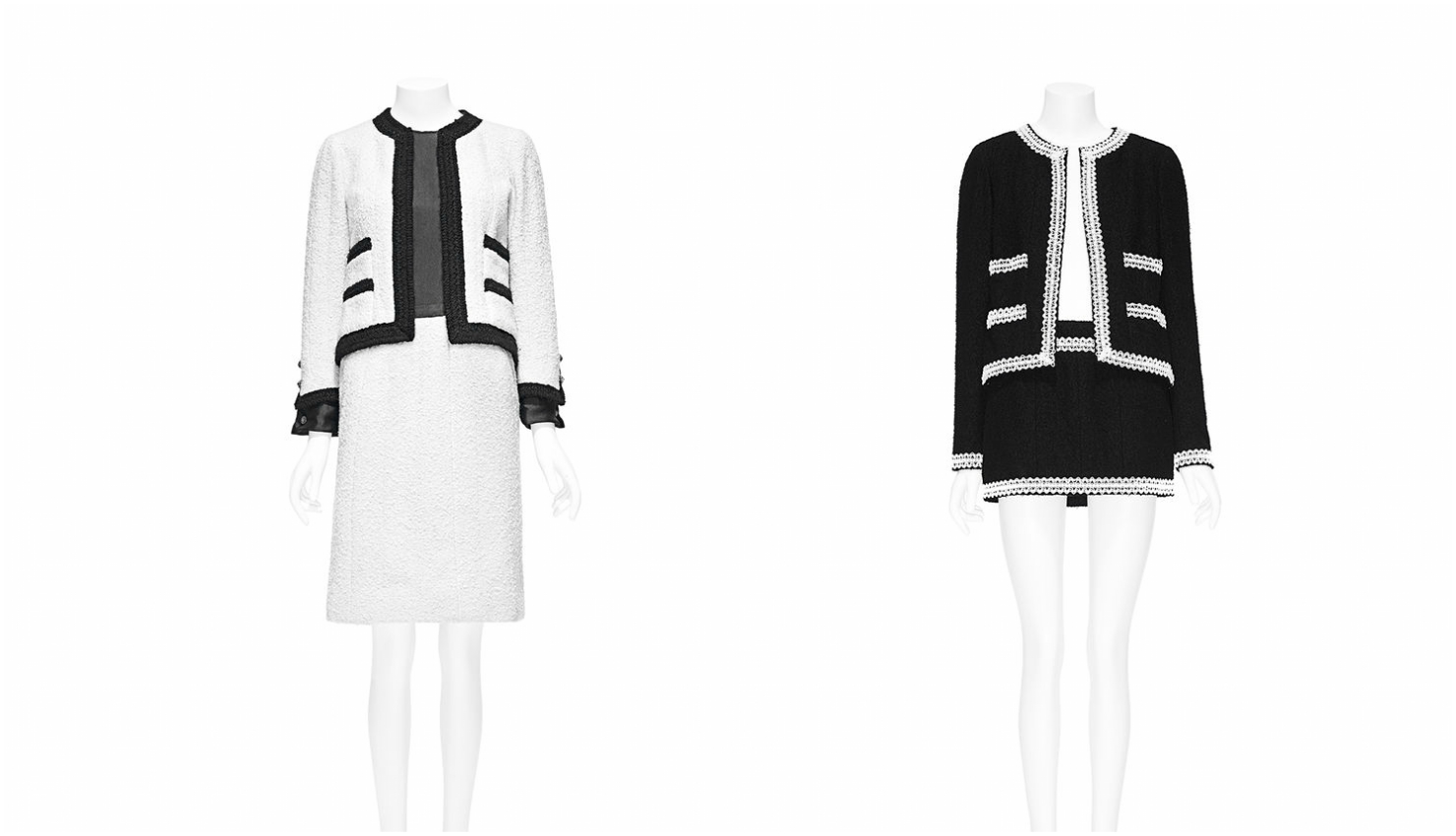
I: Gabrielle Chanel (Coco Chanel) Spring-Summer 1963. D: Spring-Summer 1994 Chanel. Images: Met Museum. Nicholas Alan Cope
Also, most of the garments in the exhibition are black to highlight the silhouette changes. Although, the exception is at the end of the exhibit where a vwhite dress from Viktor & Rolf’s Spring-Summer 2020 collection crafted with patchwork design.

Viktor & Rolf Spring-Summer 2020. Photo: Met Museum
The dress represents the future of fashion, highlighting the importance of community, sustainability and collaboration. A garment that links the concept of durability with the concerns that will mark the near future of the fashion industry: diversity, inclusion, longevity….




